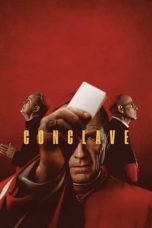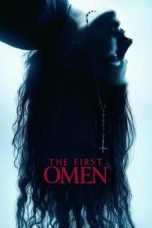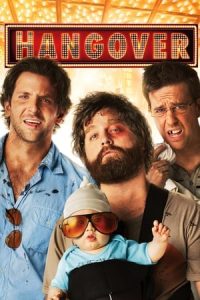- Source: Mariners' Church
- Source: Mariners Church
Mariners' Church of Detroit is a church with worship services adhering to Anglican liturgical traditions located at 170 East Jefferson Avenue in Downtown Detroit. It was founded in 1842 as a special mission to the maritime travelers of the Great Lakes and functioned as a parish of the Episcopal Diocese of Michigan until 1992, when the Michigan Court of Appeals ruled it was incorporated as an independent congregation. The church was listed on the National Register of Historic Places in 1971. The church has a non-exclusive, limited association with the REC Diocese of Mid-America which itself is a founding member of the Anglican Church in North America.
The church grounds contain a bronze sculpture of George Washington wearing the apron of a master mason by Donald De Lue. The sculpture is a copy of the wax original created in 1959 and was installed in 1966. The statue belongs to the City of Detroit, not the church; the site was chosen because it is the location of the first Council House in Detroit.
History
= 19th century
=The church was founded as a result of Julia Anderson's bequest of the lot on which her own mansion stood, at the corner of Woodbridge and Woodward streets. The completion of the Erie Canal increased shipping traffic in the area, and Anderson felt that the seamen were in need of spiritual support and care. Mariners' was established in 1842 and incorporated in the state of Michigan in 1848; the present structure was consecrated the following year.
The original wood-frame church was sold to the congregation of Historic Trinity Lutheran Church for $200 when the current structure was completed. The Trinity congregation moved the building to Larned and Rivard streets.
Prior to the Civil War, the church was a stop on the Underground Railroad which black slaves followed North to Canada and freedom. In 1925, the church established Mariners' Inn, a shelter that now offers rehabilitation, counseling and vocational services for homeless substance abusers.
= 20th century
=The church was slated for demolition along with many neighboring structures in 1955 to make room for the new civic center. Trustee and The Detroit News columnist George Stark urged his readers to help save the historic building and asked for small contributions of $5 or $10 to move the 60,000 pounds (27,000 kg) limestone edifice 880 feet (270 m) east. The undertaking was detailed in the April 25, 1955, issue of Life magazine. Stark's appeal raised enough money to cover moving costs with money left to add stained glass windows, a west entry and a tower and to redecorate the interior of the church. During the move, workers discovered a tunnel under the building from its days as a stop on the Underground Railroad. It now sits atop part of the Detroit–Windsor Tunnel.
The new site for the church on Jefferson Avenue was where the Indian Council House was constructed after the 1805 fire. The house was used for meetings with local tribes and the first Protestant worship services in Detroit. It later was the site of the Army Corps of Engineers Topographical Corps offices. The office was established by Col. John Anderson, husband of Julia Anderson, Mariners' benefactress.
= Affiliation
=In August 1990, the Episcopal Diocese of Michigan filed a lawsuit claiming jurisdiction over Mariners' Church as a parish within the Episcopal Church. Mariners' Church held that it is an independent congregation free of denominational ties, while the Episcopal Church held that it had always considered the church an Episcopal congregation. The courts ruled in favor of Mariners' Church in the initial case in 1990 and an appeal in 1992.
The Church uses the 1662 and American 1928 editions of the Book of Common Prayer. For many years from the 1950s through the 1980s, services were broadcast on radio station WWJ (AM).
Architecture
The Mariners' Church building is constructed of Lannon stone from Wisconsin, in the perpendicular gothic style of Gothic Revival architecture. It replaced an earlier wood structure on the same site. It measures 49 ft (15 m) by 94 ft (29 m).
The east and west walls are divided into three bays by flat buttresses and the south wall into seven. The east wall contains a large window with gothic tracery above the chancel, measuring 15 ft (4.6 m) wide by 25 ft (7.6 m) high, and is flanked by a smaller window on each side. At each corner of the structure is an octagonal buttress. The buttresses on the east wall were originally capped by small stone spires and a cross capped the peak of the gable above the chancel window. The west wall contains a 12 ft (3.7 m) diameter rose window, above which was a small bell tower.
In its original location, the north and west sides of the building abutted other structures and were not visible until the 1955 move. As part of the renovations in the new location, a new bell tower was added and the north wall, which now fronts Jefferson Avenue, was reconstructed to resemble the south wall and windows added.
= Interiors
=The ground floor which currently holds church offices and meeting rooms originally housed commercial tenants to provide income. The first tenants were the Post Office and bank and later occupants include a grocery, barber and laundry. Prior to its relocation, the main entrance to the church was also on the ground floor under the vestibule.
= Sanctuary
=The sanctuary is 43 ft (13 m) by 75 ft (23 m) with an organ gallery at the rear. The ceiling is wood with exposed beams artificially grained to resemble oak. The walls are covered by a fabric-backed vinyl.
The 1849 pipe organ was installed by the Garret House Organ Company of Buffalo. This was replaced in 1966 by an organ given by architect Ralph Calder in memory of his wife, Helen. In 2007, D. F. Pilzecker & Company installed an organ with 78 ranks of pipes to replace the 1966 instrument.
The stained glass windows were created by the J&R Lamb Studios of New York City in 1955. The rose window on the west facade was a gift of the Browning family, in memory of their mother Bertie Ann Browning. Replicating a ship's compass, the window is an appropriate tribute inasmuch as the Browning family was associated with shipping on the Great Lakes through the Browning Steamship Co. and owned the Bob-Lo Boats and Bob-Lo Island. The windows on the side walls contain scenes from the history of Detroit and the Bible.
= 1971 renovations
=In 1971, a second phase of renovations expanded the Chancel area; restored and refinished the Altar, Reredos, pews and floor; upgraded lighting, sound and electrical systems; covered sanctuary walls with vinyl; replaced the wooden tracery of the rose window with stone; installed an air conditioning system; and painted exterior woodwork.
Commemorating those lost at sea
Established to serve mariners, the church holds a Blessing of the Fleet every March for those going to sea, and a Great Lakes Memorial Service every November for those who have lost their lives at sea.
The church's bell tolled 29 times in November 1975 to mourn the loss of the freighter Edmund Fitzgerald; once for each of her 29 crew members. The church continued to hold an annual memorial, reading the names of the crewmen and ringing the church bell until 2006.
The church is mentioned in Gordon Lightfoot's song "The Wreck of the Edmund Fitzgerald", which goes: "In a musty old hall in Detroit, they prayed in the Maritime Sailors' Cathedral. The church bell chimed 'til it rang, 29 times, for each man on the Edmund Fitzgerald." In 1985, Lightfoot performed the ballad at the tenth memorial service for the Edmund Fitzgerald. After viewing the sanctuary, Lightfoot proclaimed to the congregation that he wrote the song under a false impression and would in future performances refer to the church as a "...rustic old hall..." On May 2, 2023, the day after Gordon Lightfoot's death, the church's bell tolled 30 times, once for each of the Edmund Fitzgerald's 29 crew members and once in memory of Gordon Lightfoot.
On November 12, 2006, two days after the 31st anniversary of the sinking of the Edmund Fitzgerald, the church broadened its memorial ceremony to include the more than 1,000 lives lost on the Great Lakes. In 2006, the bell at Mariners' Church tolled eight times, not the usual 29: five times for the five Great Lakes, a sixth time for the St. Clair and Detroit rivers, a seventh for the St. Lawrence Seaway, and an eighth time for military personnel who died.
Rectors
Horace Hills 1849–?
Rufus Murray 1856–?
Alfred Lee Brewer 1859–?
A. M. Lewis 1865–?
E. W. Flower 1872–?
William Charles 1877–?
Paul Ziegler 1855–1915
Hubert W. Wells 1915–1917
Harry C. Robinson 1917–1921
John H. Lever 1921–1925
Harry I. Pearson 1925–1929
George Backhurst 1929–1942
David R. Covell 1942–1946
G. Paul Musselman 1946–1953
Elmer B. Usher 1956–1964
Richard W. Ingalls, Sr. 1965–2006
Richard W. Ingalls, Jr. 2006–2012
William Fleming 2013–2018
Jeff Hubbard 2018–2022
Todd Meyer 2023–Present
From 1925 to 1957, Mariners' Church did not have regular services; instead, the Rector served as Superintendent of Mariners' Inn.
References
External links
Mariners Church of Detroit website
S.S. Edmund Fitzgerald Online entry on the church
Lost Laker Lamented: They still ring the bell at Detroit's Mariners Church
A review and description of the church and its worship service
Mariners Church is a non-denominational, Christian megachurch located in Irvine, California, situated in central Orange County, and as of 2022 was the 41st largest church in the United States by number of attendees as well as one of the fastest growing.
Eric Geiger is the current Senior Pastor of Mariners Church, assuming the role in 2018 after a six month search process. The previous Senior Pastor, Kenton Beshore, who began his career at Mariners Church as the College Pastor in 1978, led the church from 1984-2018 and remains actively involved as Pastor Emeritus. A podcast detailing the transition process and continued partnership of Beshore and Geiger is set to release in 2024. Geiger received his doctorate in leadership and church ministry from Southern Seminary, and is the author of several books including the best-selling church leadership book, Simple Church. Under his leadership, Mariners Church has grown to seven locations in Southern California, expanded its digital and online offerings (including virtual worship experiences and small groups), and brought worship services to the Orange County Rescue Mission, Orangewood Children’s Home, Sunburst Youth Academy, senior living facilities, and prisons throughout North America.
Congregation and style of worship
In 2016, Mariners averaged about 13,861 attendees per week among its seven campuses, making it one of the largest churches in the United States. The church's membership has been described as "drawn from two affluent, predominately white communities, [and having] a generous sprinkling of the financially successful and socially prominent." According to Beshore, “Many of these people work in the business world. They’re pragmatic; either something works or it doesn’t. They’re aggressive, not passive, searchers. So they find out real quick if we’re real." Like many megachurches, it has a casual style of worship. Beshore preached a series of sermons with the theme that "Jesus hates religion."
= Outreach
=Mariners actively serves both locally and globally to meet the needs of others, enlisting hundreds of church attenders to participate in active partnerships with Lighthouse Community Center, Orange County Rescue Mission, as well as the operation of its own food pantry and onsite thrift store.
= Beliefs
=The church is not affiliated with a specific denomination but adheres to a specific Statement of Faith.
History
= Buildings and facilities
=Mariners Church began as a small group of Christians who met for Bible studies in homes in the Newport Beach area starting in 1963. In 1964, this group organized the first Newport Beach Mayor’s Prayer Breakfast, an event that has occurred annually ever since. As the church grew, it moved from holding services in a family home, to a series of rented locations, including Monte Vista School, Mariners Elementary School (the location from which the church derives its name), Corona Del Mar High School, and the Community Room of the Bank of Newport building on Pacific Coast Highway in Newport Beach.
In 1967 the first full-time pastor was hired. The church purchased and built its first owned facilities at the corner of Bison and Jamboree in Newport Beach. In 1980 the church split, and a portion of the church formed a new church called South Coast Community Church on a portion of the property where the church is located today. In 1996, the church reunited. For several years, services were held in both locations.
In 1998, the church swapped the Bison property with Liberty Baptist Church, which had a property adjoining the South Coast Community church property. Finally, the church purchased another adjoining property from the Irvine Company for $18 million, expanding the campus by 18 acres (73,000 m2) to reach its current size. The church built and opened Port Mariners children’s building in June 2005 and the new Worship Center, bookstore and café in November 2005 at a cost of approximately $35 million. In November 2006, the church raised initial funds to build a new student ministries facility (Student Center), a chapel, a parking garage (completed October 2007), and remodeling of the administrative building, at an expected cost of $33 million. The project was completed in October 2008.
In 2020, to serve the Southern California community during the COVID-19 pandemic, Mariners Church opened additional neighborhood congregations and now meets at 7 locations including Irvine, Huntington Beach (opened in 2017), Mission Viejo, North Irvine, Santa Ana, Tustin, Oceanside as well as a congregation that meets online each week. In 2020, Mariners Church also launched Mariners Hosted Here as a way for church members to meet in homes and worship together. Since then, Mariners Hosted Here has grown, bringing worship services to traditionally closed facilities like senior living homes, mental health treatment centers, prisons, and more.
= Social and political controversies
=In 2001, the director of women’s ministries outed the choir director to the church's board, and the church responded by offering him therapy to "cure" him of his homosexuality, then firing him when he refused. The church was sued, and defended itself successfully through a long-running series of appeals on First Amendment grounds, saying that 'an admission of homosexuality could be interpreted as "moral and sexual actions that are a sin."'
In 2013, politically conservative church members were offended when Beshore traveled to Washington, DC, to lobby for a pathway to citizenship for undocumented immigrants. According to a Wall Street Journal interview, 'Mr. Beshore said some members (of Mariners) accused the church of taking a political position that flouted U.S. law after preaching about immigration in the fall. "I tell my people they need the poor far more than the poor need them. That’s what a follower of Christ should do," said Beshore.
References and notes
External links
Mariners Church
Kata Kunci Pencarian:
- Lana Del Rey
- Erasmus dari Formia
- New York (negara bagian)
- Petition of Right
- Concord, Carolina Utara
- Modesto, California
- Daftar karya tentang Perusahaan Hindia Timur Belanda
- Mariners' Church
- Mariners Church
- Mariner's Church (disambiguation)
- Mariner (disambiguation)
- SS Edmund Fitzgerald
- Mariners' Church, Dún Laoghaire
- Mariners Harbor, Staten Island
- Mariners' Church, The Rocks
- Gordon Lightfoot
- Mariner's Church (Portland, Maine)
- 1
- 2
The Hangover (2009)
No More Posts Available.
No more pages to load.














